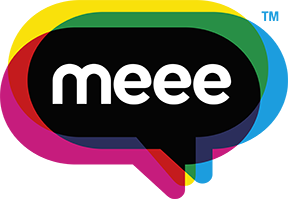The Psychology of Colour

Have you ever had a really strong response to a colour? Like, absolute love or complete revulsion? The colours around us have a significant impact on our emotions, whether we realise it or not. The impact is so great that marketers go to great lengths to ensure their products are made in colours that consumers will respond positively to. The science of colour psychology is big business.
In medicine, patients can experience a sensory response to the colour of their medication. Think that pink medicine is sweeter? Reluctant to take that red antidepressant? In America, some studies suggest that people who receive medication in a different colour to their usual prescription don’t believe the new tablets are as effective as their previous ones. The change in colour makes them doubt their efficacy.
Several ancient civilisations used colour therapy in the treatment of patients; red was used to stimulate the circulation, whilst orange was used to increase energy. Think about those fizzy effervescent drinks, like Berocca - they’re almost always orange.
Historically, it was believed that there were four primary colours affecting mood: red, blue, yellow and green. Red represented the physical, such as excitement or warmth, but also the negative emotion of aggression. Blue was intellect, of calmness and communication but also coldness and unfriendliness.
Yellow, the colour of emotion, was optimism and confidence but, in opposition, the colour of anxiety and depression. In literature, Charlotte Gilman’s The Yellow Wallpaper is a classic short story in which the yellow wallpaper in a woman’s room comes to represent a woman’s descent into madness.
Green was the colour of balance, of harmony and peace but, conversely, of stagnation. The colour apparently strikes the eye in such a way as to require no ocular adjustment and is, therefore, more restful.
“Colours, like features, follow the changes of the emotions," the artist Pablo Picasso once said. But our responses to colour are also cultural. Whilst in the Western world, the colour white symbolises purity, in the East, it is the colour of mourning (rather changes the tone of the next wedding you attend!).
So how can you use colour to enhance your mood? Changing your bedding to a restful colour is a good start. Wear red to the gym to enhance your performance, or paint your nails yellow to enhance creativity. You can add something green to your outfit if you need a bit of a mental break; if you want to enhance your intelligence, say for a job interview, rock a blue shirt or dress. But most importantly, don’t wear any colour that you don’t like - the best route to feeling good is to do positive stuff that makes you happy.
Ready to take the next step with Meee?
Download the ‘MyMeee’ app (available on iPhone/Apple or Android/Google), explore our books, listen to our 'Just Meee' podcasts and subscribe to our monthly newsletter, ‘Meee Moments’, for exclusive tips, inspiring stories, and updates to keep you on track with your journey!
At Meee, we’re dedicated to inspiring everyone, everywhere, every day to Find, Live, and Give their unique Magic. As Magic Makers, we have the power to transform ourselves, our organisations, and our communities. Together, we can build a better world. Join us on this journey and be part of the change. Just ask@meee.global


